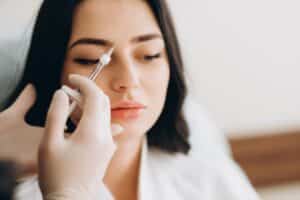
Botox is one of the most popular injectable treatments out there because of how effective it is in softening lines and wrinkles. Despite how widely known the treatment is, many of my patients are surprised to learn that Botox is also used for many medical purposes as well. At Mountain Lake Plastic Surgery, my focus is on cosmetic applications for Botox, but some patients may be good candidates for these other Botox treatments as well.
Chronic Migraines
Aside from softening fine lines and wrinkles, one of the most popular uses for Botox is relieving migraines. This was first noticed as a welcome side effect among patients who were using Botox for their wrinkles or lines in the 1990s. The precise reason why Botox works to prevent or relieve migraines is unknown, but many patients find relief from their chronic headaches when Botox is injected in various places throughout the head and neck.
Neck or Shoulder Spasms
Before Botox was even used as a cosmetic treatment, it was approved in 2000 to treat a disorder known as cervical dystonia, which causes patients to have an abnormal head position, resulting in severe neck pain. Injecting Botox into the appropriate muscles can stop them from contracting or spasming uncontrollably, relieving pain for many. Because I primarily use Botox cosmetically, you might need to talk to your primary care doctor first if you’re interested in using Botox to treat cervical dystonia or other muscle pain.
Crossed Eyes
Strabismus is the medical term for crossed eyes, or eyes that otherwise do not line up correctly. Botox was approved early in its use to treat strabismus.
Excessive Sweating
Excessive sweating is also known as hyperhidrosis. Botox works to block sweat glands, making it an effective treatment to help people with this condition reduce the amount of sweat they produce. Botox can be injected into the armpits, hands, or feet to help reduce sweating in these areas.
Eyelid Twitching
Eyelid twitching is caused by small, uncontrolled muscle contractions in the eyelids. Careful injections of Botox can help calm these muscles and give patients relief from twitching. The eye area is very sensitive, so you should always seek treatment from a provider you can trust before injecting Botox near the eyes. As a board-certified plastic surgeon, I have extensive knowledge and training in anatomy and understand exactly where injections should be made to achieve the intended results.
TMJ Pain
TMJ, or temporomandibular joint, pain is caused by habitually grinding the teeth or clenching the jaw. Botox can be injected into the masseter muscle, which is responsible for TMJ pain, to relax this area and relieve TMJ pain.
Request a Consultation
To learn more about Botox and see if injections are the solution for you, request a consultation. Call Mountain Lake Plastic Surgery at (802) 231-4284 or request your consultation online.
